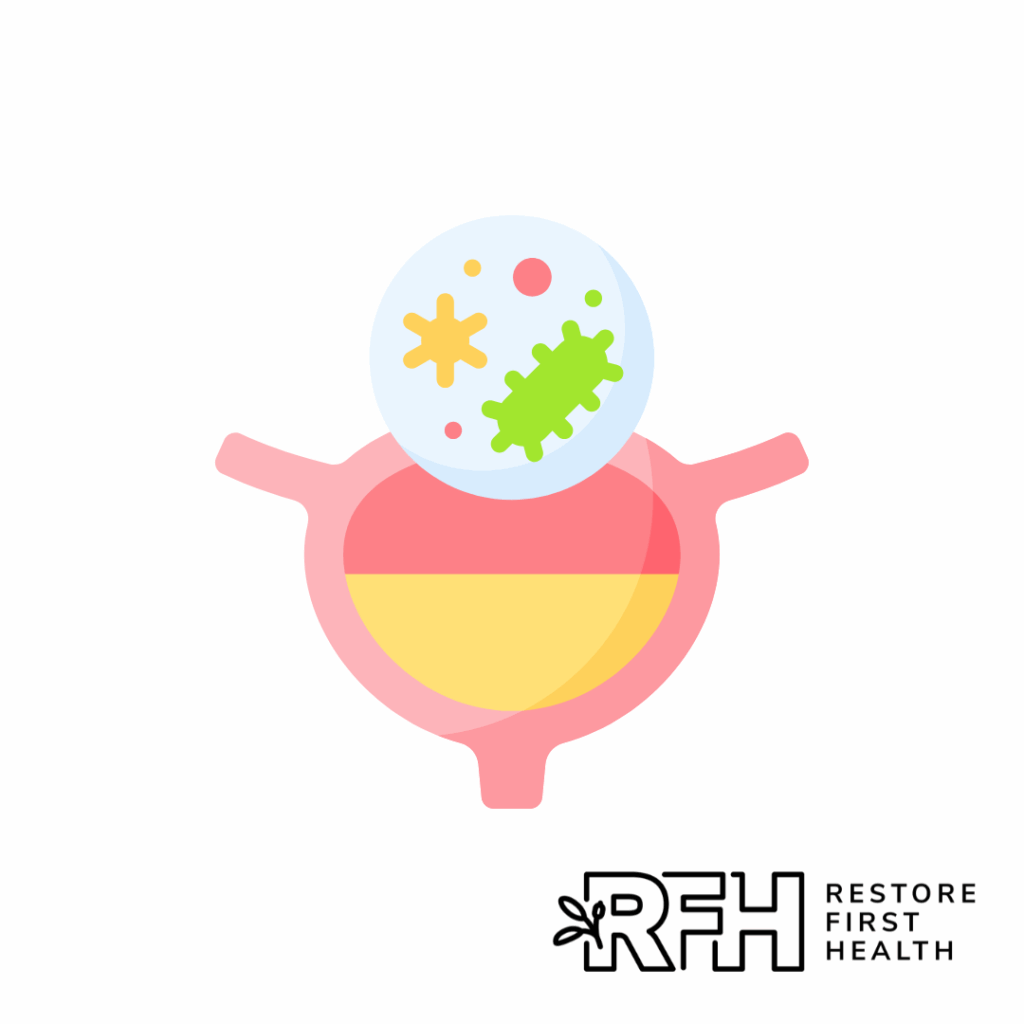by: Jessica Holland
Urinary tract infections are one of the most common reasons our patients visit the hospital. That matters because every visit disrupts recovery, increases infection risk, and adds strain to an already complex care situation.
At Restore First Health, our goal is to keep patients stable, healing, and out of the hospital. Preventing UTIs is a critical piece of that strategy.
Why UTIs Are a Problem for Wound Care Patients
For elderly patients managing chronic wounds, diabetes, or reduced mobility, a UTI can trigger a rapid decline. Infections often present with confusion, fever, and weakness. That can result in falls, worsening wounds, and emergency room visits.
We often see UTIs linked to delayed wound healing and increased readmissions. In a high-acuity population, small issues become big problems fast.
What Contributes to UTI Risk
- Infrequent or incomplete voiding
- Dehydration
- Overuse or poor management of catheters
- Limited mobility
- Incontinence and lack of hygiene support
- Poor communication across care teams
These factors often go unnoticed until the patient is already in crisis.
How to Prevent UTIs in Wound Care Patients
1. Hydration as Standard Protocol
Patients should drink at least six to eight cups of fluid daily unless otherwise restricted. This supports kidney function, reduces bacterial growth, and keeps the bladder flushed.
We train families and caregivers to monitor intake, especially in patients with incontinence who may intentionally limit fluids.
2. Catheter Awareness
Avoid catheters unless absolutely necessary. If one is in use, ensure:
- Daily cleansing of the area and tubing
- Closed drainage systems are maintained
- Removal as soon as appropriate
Restore First providers assess catheter use during every patient evaluation and communicate with the broader team.
3. Mobility and Repositioning
Frequent repositioning reduces pressure and supports better voiding. For patients with low mobility, even small positional changes can help improve urinary flow.
4. Incontinence Support
- Keep the perineal area clean and dry
- Use barrier creams to reduce skin breakdown
- Change briefs and pads frequently
- Utilize antimicrobial wipes if needed
Skin breakdown around the perineum increases bacterial risk and impacts wound recovery.
5. Nutritional Support
A diet rich in protein, hydration, and immune-supporting nutrients like vitamin C and zinc can help reduce infection risk. Nutrition evaluations should be built into the care plan.
6. Early Detection
Behavioral changes such as increased confusion or agitation can be early signs of a UTI. Restore First teams are trained to recognize these signs and escalate care early.
The Restore First Approach
Our model includes full-body evaluations, not just wound care. We look at hydration, catheter use, mobility, and nutrition at every visit. Our providers document and communicate directly with home health, PCPs, and caregivers to prevent complications before they require hospitalization.
We help prevent hospital visits by catching infection risks early and coordinating across teams to adjust care in real time.
Final Thought
UTIs are common, but they are not inevitable. With proactive care, strong coordination, and attention to early warning signs, we can keep patients healing at home and not sitting in a hospital bed.
If your patients are high risk for UTIs, we can help. Restore First Health partners with your team to prevent avoidable issues and deliver advanced care where patients need it most.
References
- Centers for Disease Control and Prevention. (2023). Catheter-associated Urinary Tract Infections (CAUTI).
https://www.cdc.gov/hai/ca_uti/uti.html
- Rowe, T. A., & Juthani-Mehta, M. (2013). Urinary tract infection in older adults. Aging Health, 9(5), 519–528.
https://www.ncbi.nlm.nih.gov/pmc/articles/PMC3749018/
- Nicolle, L. E. (2014). Urinary tract infections in long-term–care facilities. Infectious Disease Clinics of North America, 28(1), 111–120.
https://doi.org/10.1016/j.idc.2013.10.004
- National Pressure Injury Advisory Panel (NPIAP). (2021). Best Practices for Maintaining Skin Health in the Presence of Incontinence.
https://npiap.com/page/IncontinenceAssociatedDermatitis
- Shah, H., Bosch, W., Thompson, K. M., & Hellinger, W. C. (2016). Inappropriate use of urinary catheters: A prospective observational study.
American Journal of Infection Control, 44(6), 643–648.
https://doi.org/10.1016/j.ajic.2015.12.021
- Silver, S. A., et al. (2017). Effect of a Quality Improvement Intervention to Decrease Catheter-Associated Urinary Tract Infections in a Hospital Setting. JAMA Internal Medicine, 177(8), 1131–1136.
https://doi.org/10.1001/jamainternmed.2017.1689
- Centers for Medicare & Medicaid Services. (2022). Reducing Avoidable Hospital Readmissions.
https://www.cms.gov/medicare/medicare-fee-for-service-payment/acuteinpatientpps/readmissions-reduction-program
